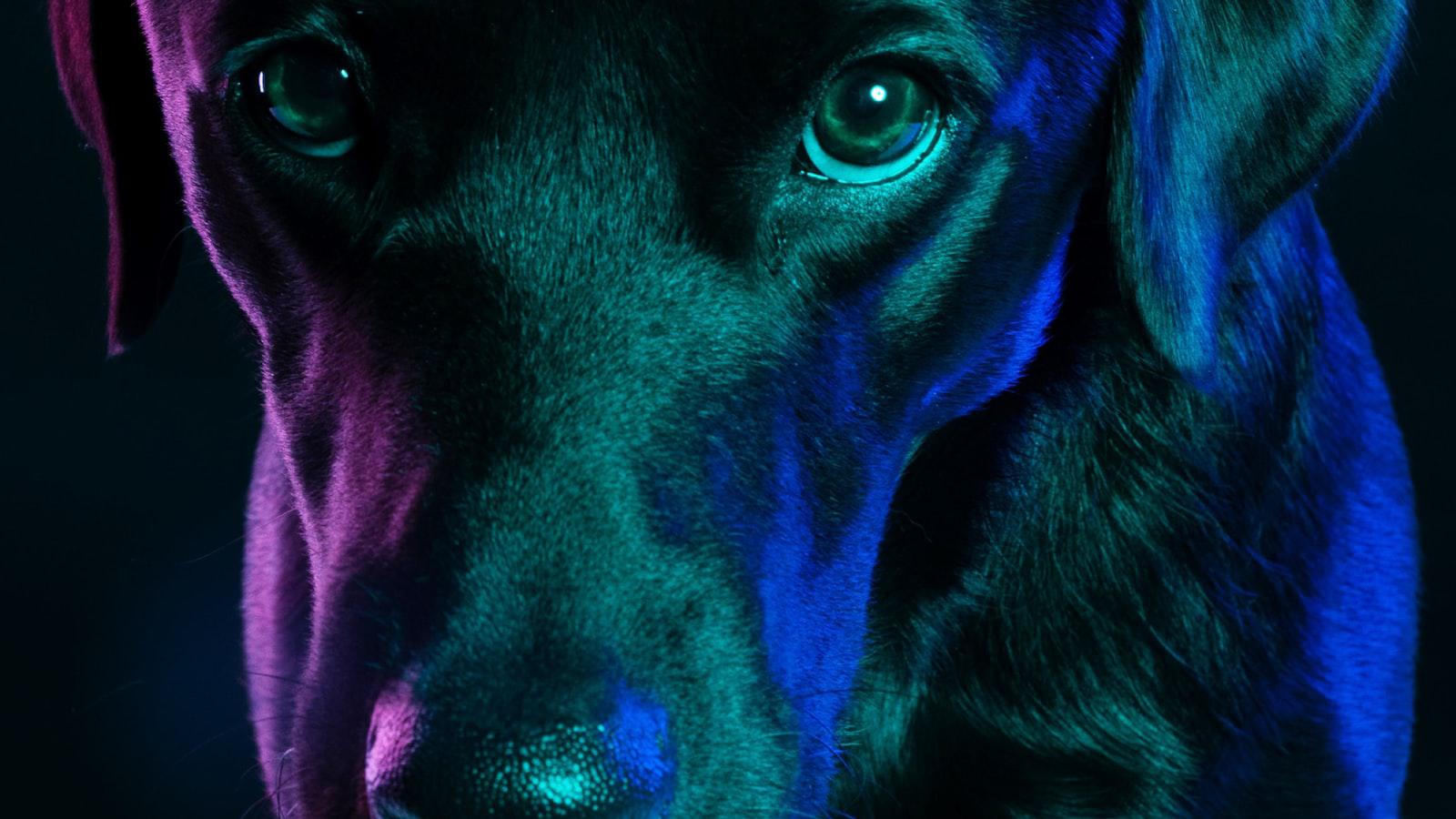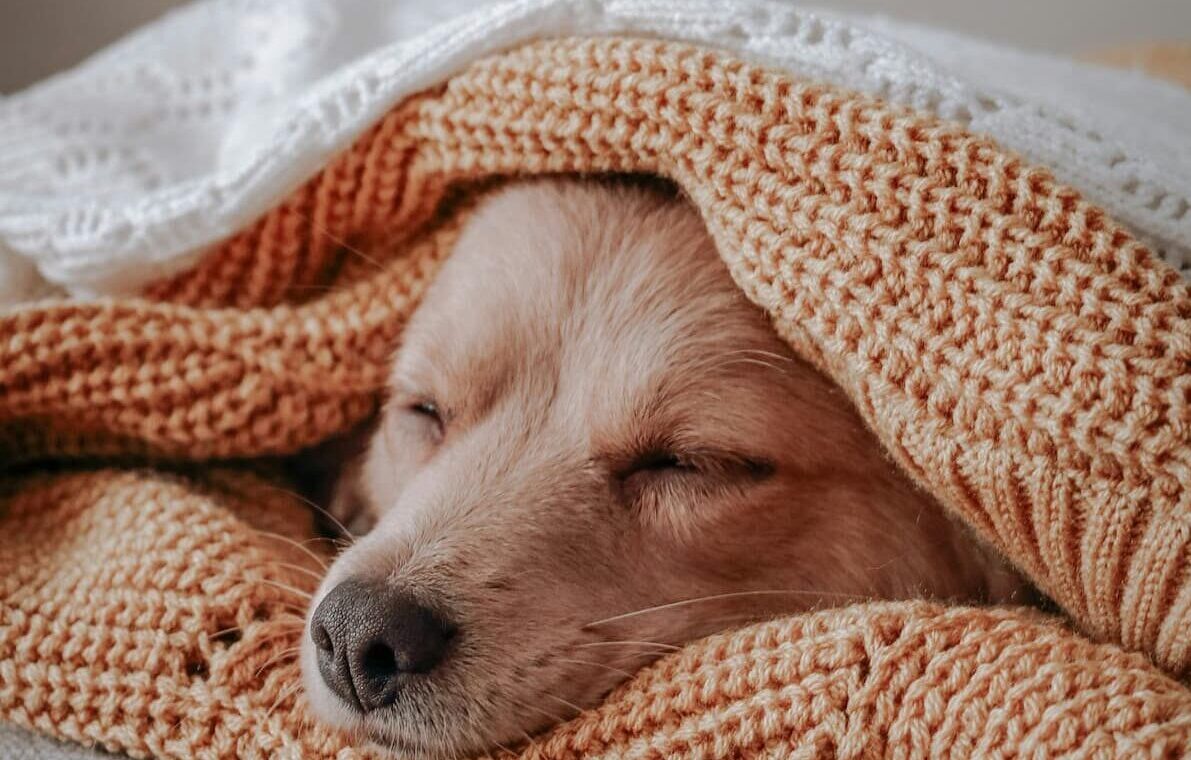In the quiet embrace of a moonlit night, as the world slips into slumber, our furry companions embark on a journey hidden from our curious eyes.
With twitching paws, wagging tails, and soft yips that escape their muzzles, dogs transport themselves into a realm elusive to our understanding: the enigma of their dreams.
Have you ever wondered what secrets lie within these nocturnal escapades, what do dogs dream about?
Read on to have your questions answered.
Why Do Dogs Dream?
Have you ever watched your furry friend sleep and noticed their whiskers twitching, paws paddling, or even hear them softly bark?
Just like humans, dogs also experience vivid dreams while they sleep, and their dreams can be just as mysterious and entertaining as our own.
Scientists believe that dogs dream for the same reason we do – to process their daily experiences and memories.
During the rapid eye movement (REM) stage of sleep, where dreaming occurs, a dog’s brain can be just as active as when they are awake.
This is why you may see your pup move their legs, wag their tail, or even vocalize while dreaming.
It’s their way of acting out the things they are dreaming about!
Understanding the Canine Dream World
So, what do dogs dream about?
While we can’t exactly pop into their dreams and take a peek, scientists believe that dogs dream about familiar experiences and activities that happened during their waking hours.
For example, if your pup spent the day playing fetch at the park, they might dream about chasing a ball or running through an open field.
Similarly, if they had a delicious meal, they might even dream about enjoying their favorite treats.
It seems that dogs’ dreams are a reflection of their daily activities and experiences.
Unveiling the Secrets Behind a Dog’s Subconscious
Dogs, like humans, experience a range of fascinating dreams and it’s truly fascinating to delve into the depths of their subconscious:
1. Emotional Processing: Just like humans, dogs use dreaming as a way to process emotions and experiences from their daily life.
When they close their eyes, their subconscious mind takes over, replaying scenes and events from their waking hours.
You may notice your canine companion twitching or wagging their tail in their sleep, which could indicate that they’re reenacting a happy or exciting moment they had during the day.
2. Memory Consolidation: Dreams also play a crucial role in memory consolidation for our four-legged friends.
While they snooze peacefully, their brain is hard at work, sorting and storing information they’ve learned throughout the day.
This unconscious replay of events helps reinforce important memories, allowing dogs to better understand and retain new skills or commands they’ve recently been taught.
3. Instinctual Survival Skills: Another fascinating aspect of a dog’s dream world is their reliving of instinctual survival skills.
Dogs are descendants of wolves, and even though they may not roam the wild anymore, their primal instincts are still intact.
During sleep, it’s not uncommon to see your pup engage in running motions or vocalizations as they imagine themselves chasing prey or defending their territory.
These dreams reveal the deep-rooted essence of their ancestry and remind us of their instinct to protect and provide for their pack, which includes us as their beloved owners.
Creating the Perfect Sleep Environment for Your Pooch
Creating a peaceful and cozy sleep environment is essential for your furry friend to have sweet dreams.
Just like us, dogs have their own dream world that can be whimsical and entertaining.
Here are some tips to ensure the perfect sleeping environment that maximizes the benefits of sleep for your furry friend:
1. The Importance of Comfort: Providing a comfortable sleeping spot for your dog is crucial for a good night’s rest.
Consider investing in a high-quality dog bed that provides adequate support for their joints and muscles.
Opt for a bed with memory foam or orthopedic padding to ensure ultimate comfort.
Additionally, choose a bed size that matches the size of your dog, allowing them to stretch out and relax.
2. Dim the Lights: Just like humans, dogs also prefer a calm and soothing sleep environment.
Avoid bright lights in your dog’s sleeping area, as it can disrupt their sleep cycle.
Opt for soft, ambient lighting instead, which helps create a calming atmosphere.
You can also use blackout curtains to minimize external disturbances, ensuring your pooch enjoys uninterrupted sleep and dreams.
3. Reduce Noise and Create a Safe Space: Noise can be a major disturbance for dogs during sleep.
Identify and eliminate any sources of noise around your dog’s sleeping area.
If your dog is sensitive to external sounds, consider using a white noise machine or a calming background soundtrack to drown out unwanted noises.
Additionally, create a designated safe space for your pooch, such as a crate or a comfortable corner, where they can retreat and relax undisturbed.
4. Stick to a consistent sleep schedule: Dogs thrive on routine, and a consistent sleep schedule can help regulate their internal clock.
Try to establish fixed bedtime and wake-up times, making sure they align with your dog’s natural sleep patterns.
This will not only promote restful sleep but also help them feel more at ease and well-rested throughout the day.
5. Engage in daily physical and mental exercise: Dogs need a healthy balance of physical and mental stimulation to tire them out and ensure a good night’s sleep.
Regular walks, playtime, and puzzle toys can help them expend energy and stimulate their minds.
A tired pup is more likely to have deeper and more satisfying sleep, reducing the chances of any restlessness or nightmares.
By following these simple tips, you can create a sleep environment that guarantees your canine companion sweet dreams.
Remember, just like us, dogs deserve a restful and peaceful sleep to wake up refreshed and ready to tackle the day’s adventures.
So, let’s create a cozy sanctuary where your pooch can snuggle up and enjoy a world of dreams.
Who knows what exciting adventures they’ll embark on in their slumber
FAQ
Q: What do dogs dream about?
A: Well, wouldn’t we all love to know what happens in their little fuzzy heads?
Dogs dream about various things, similar to what we might dream of.
Their dreams are often filled with things they’ve encountered during the day, like chasing a ball, digging in the garden, or being showered with belly rubs.
You know, all the things that make them wag their tails!
Q: Are their dreams always happy?
A: Not necessarily.
Just think about the numerous emotions dogs experience in their daily lives; it’s only natural for these feelings to seep into their dreams as well.
You might occasionally notice your dog whimpering, growling, or twitching in their sleep.
While it’s easy to assume they’re having a nightmare, it’s not always the case.
They could be reliving an intense moment or simply reacting physically to the imaginary squirrel they’re chasing in their dream!
Q: Do puppies and older dogs dream differently?
A: Interesting you asked!
Puppies and older dogs indeed have varying dream patterns.
Puppies, with their fresh little minds, tend to dream more frequently since they’re still processing all the new information they encounter.
They might even twitch and wag their tails as they sleep, which is just too adorable!
Older dogs, on the other hand, may have more profound dreams, possibly reflecting a lifetime of adventures and memories.
You might notice them running in their sleep, chasing their dreams with the same vigor they had in their younger days.
Q: How can we tell if our dogs are dreaming?
A: Watching our furry friends dreaming is one of life’s little joys.
You can often spot signs that your dog is dreaming just by observing their behavior during sleep.
When your dog’s legs begin to twitch or paddle, or when they emit soft barks or rumbles, it’s a pretty good indication that they’re off on their own little dream adventure.
Their eyes might also flicker beneath their eyelids as they experience these dreamscape escapades.
Q: Can we wake up a dreaming dog?
A: It’s generally not recommended to wake up a dreaming dog, as it can confuse or disorient them.
Much like when we abruptly awaken from a deep sleep, dogs may experience a similar feeling of disorientation.
So, it’s usually best to let them awaken naturally on their own time.
Q: Do all dogs dream equally?
A: Dogs are unique individuals, even in the realm of dreams.
Just like us humans, the intensity and content of their dreams may vary.
Some dogs may dream more often, while others might have more vivid dreams.
It’s all a part of their charming individuality!
Q: Can we help our dogs have good dreams?
A: Absolutely!
Creating a safe and peaceful sleep environment for your furry companion can contribute to more delightful dreams.
Providing them with a comfortable bed, a quiet area, and a sense of security can promote a soothing sleep experience.
Plus, don’t forget to shower them with love and play during their waking hours, so their dreams can be filled with happy memories.
Q: Overall, what’s the significance of dogs dreaming?
A: Dogs dreaming serves as a beautiful reminder of how similar we are to our four-legged companions.
It’s a glimpse into the complex inner lives they lead and proof of the emotional depth they possess.
So, the next time you catch your loyal furry friend drifting off into dreamland, take a moment to appreciate the fascinating world they’re exploring!
Closing the Chapter
Through scientific research and anecdotal evidence, we’ve come to learn that dogs, much like humans, experience dreams during their slumber.
From fetching balls and belly rubs to exciting adventures and reuniting with loved ones, their dreams seem to mirror their daytime experiences.
Just like our own dreams, their subconscious mind conjures up a medley of memories, emotions, and desires, providing them with a miniature world of their own.
While we may never truly know what exactly dogs dream about, it’s a joyous thought to imagine them exploring imaginative landscapes or reliving their favorite moments.
It’s these dreams that help them unwind from a long day of tail-wagging and tail-chasing, allowing their minds to rest and reset for the adventures that await them upon waking.
So, the next time you find your faithful pup twitching their paws or softly woofing during a peaceful snooze, remember that they, too, have embarked on their own nocturnal escapade, perhaps even catching that pesky squirrel they’ve been eyeing all day.














